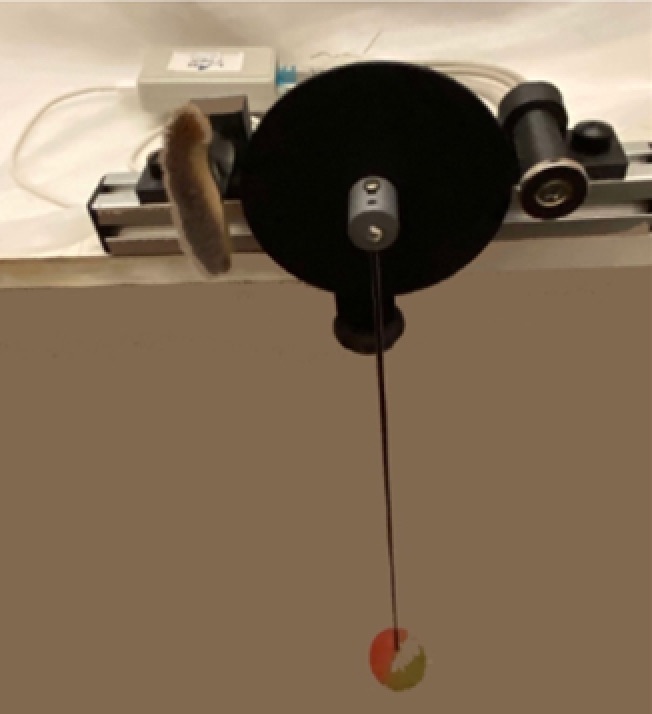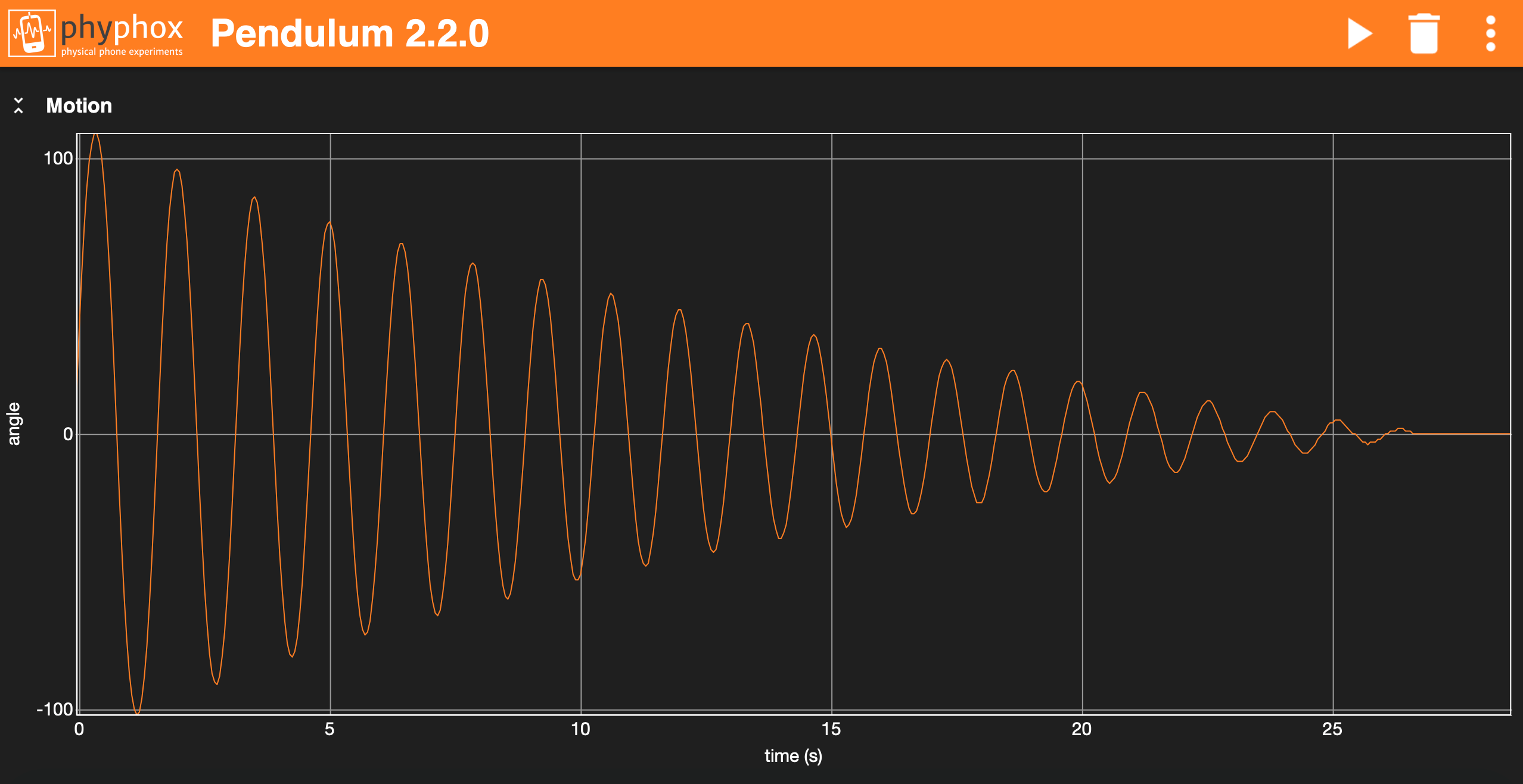Pendulum studied with smartphone / tablet
at large/small amplitude and with different types of friction
Experiments:
- the period for small oscillations does NOT depend on the value of the mass M (trying with rubber balls of different diameter or attached disc),
- the period for small oscillations depends on the square root of the effective length (by sliding the ball/disc along the rod)
- that the period for large oscillations depends on the amplitude (experimental data can be compared with theoretical predictions)
- that the damping is LINEAR for SLIDING friction
- that the damping is EXPONENTIAL for VISCOUS friction
Observe the linear damping with sliding friction
- Observe the exponential damping with viscous friction
- Export data to Excel™ for detailed analysis
Materials:
- datalogger with USB and bluetooth connection
- small friction rotation sensor
- thin carbon fiber rod
- perforated rubber ball
- aluminum disk
- magnet mounted on slide
- brush mounted on slide
- aluminum rail, equipped with a table-vice
A simple didactic tool that uses real-time data acquisition via smartphone or tablet and a pendulum coupled to a low-friction rotation sensor, with variable effective length and mass, and with two different types of adjustable damping: “sliding” friction and “Viscous” friction (proportional to the angular velocity).
A dedicated datalogger allows using the Phyphox App for Android-IOS to acquire data that can be transferred to a PC for detailed analysis.
The experiments can consist in the study of various behaviors of the system:
1) Study of the period for small oscillations (harmonic motion).
– Dependence of the period on the value of the mass M. To do this, the pendulum can be loaded with rubber balls of different sizes, or with discs.
– Dependence of the period on the length L. To do this, the masses (ball or discs) are made to slide along the shaft.
2) Study of the period for large oscillations (anharmonic motion).
When the maximum elongation of the pendulum (amplitude) is greater than about 10 °, the behavior of the pendulum becomes particularly interesting for intermediate or advanced students.
– On the one hand, the period depends on the amplitude and the oscillations of the pendulum are no longer harmonics.
– Many properties of the system associated with its non-linearity become evident and this creates new challenges for its study.
– This device is particularly suitable and flexible to carry out this type of study, the results of which can be compared with various theoretical models.
3) Motion analysis for various types of damping.
– Study of motion with sliding friction. A LINEAR decrease in amplitude is observed with time. The extent of this damping can be varied.
– Study of motion with viscous friction, ie proportional to speed. An EXPONENTIAL decrease in amplitude is observed with time. The amount of damping can be varied.

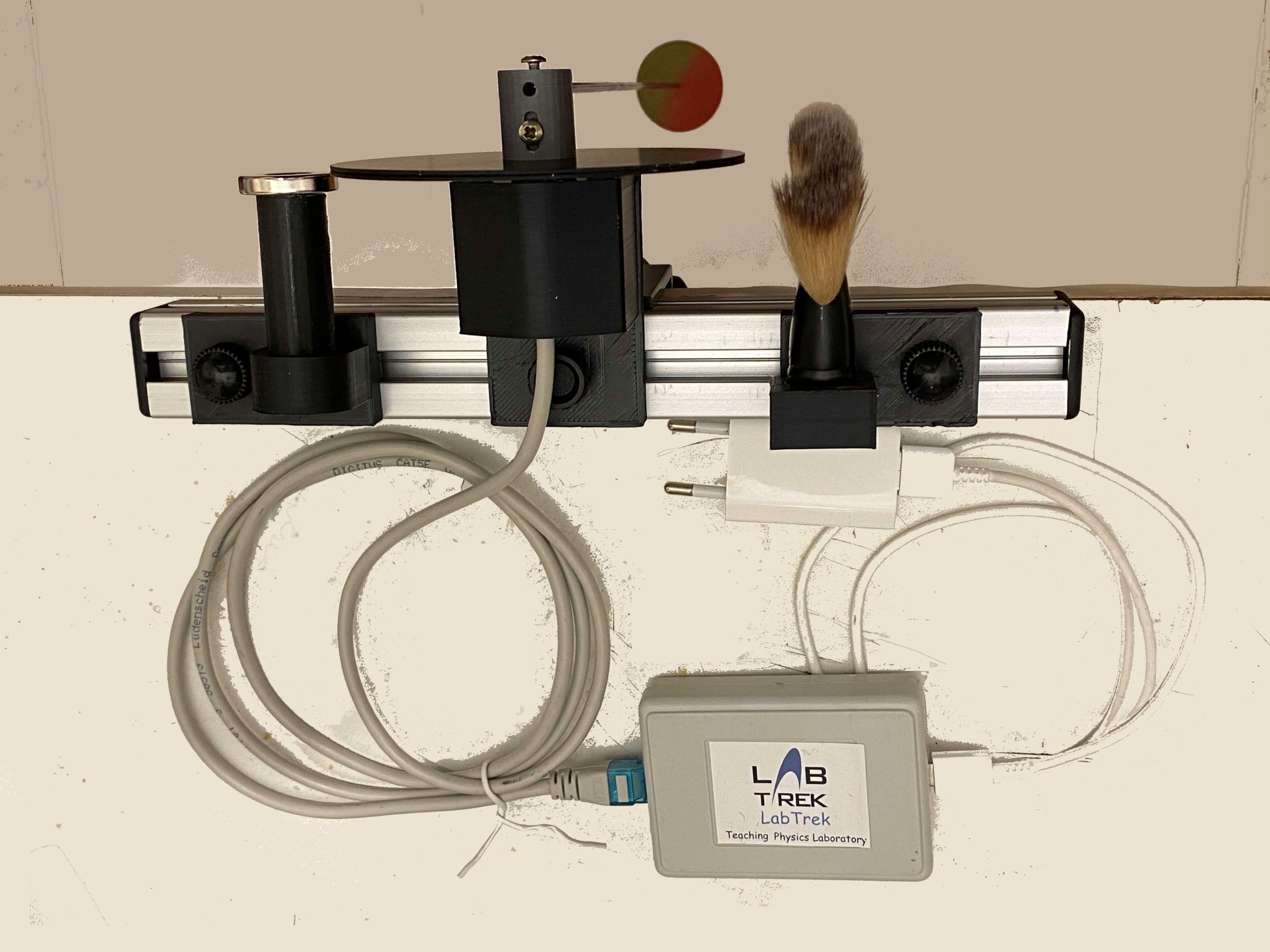
The elements that make up the device are: datalogger, rotation sensor, rod, rubber ball, aluminum disks, magnet mounted on slide, brush mounted on slide. The sensor and the two slides are mounted on an aluminum rail, equipped with a vice that allows it to be fixed to the edge of a table (see Figure 1).
The pendulum consists of a rubber ball inserted on a thin (carbon-fiber) rod attached to the pivot of an angle-sensor with very little friction.
In order to study both viscous and sliding friction, an aluminum disk is fixed to the sensor axis. In this way the oscillation of the pendulum can be damped by a resisting torque MR produced by two types of forces: a viscous force produced by a magnet faced to the disk (the eddy currents due to the relative motion of the disk-magnet produce a resisting torque proportional to the angular velocity MR = –γω, or a constant resisting torque (sliding friction) produced by a soft brush touching the disk MR = –A sign(ω).
– The intensity of each friction torque can be varied by adjusting the position of the magnet or brush with respect to the disc.
– The effective length of the pendulum can also be changed by sliding the ball along the rod.
– Finally, the mass value M can be modified by changing the type of rubber ball or disc attached to the rod.
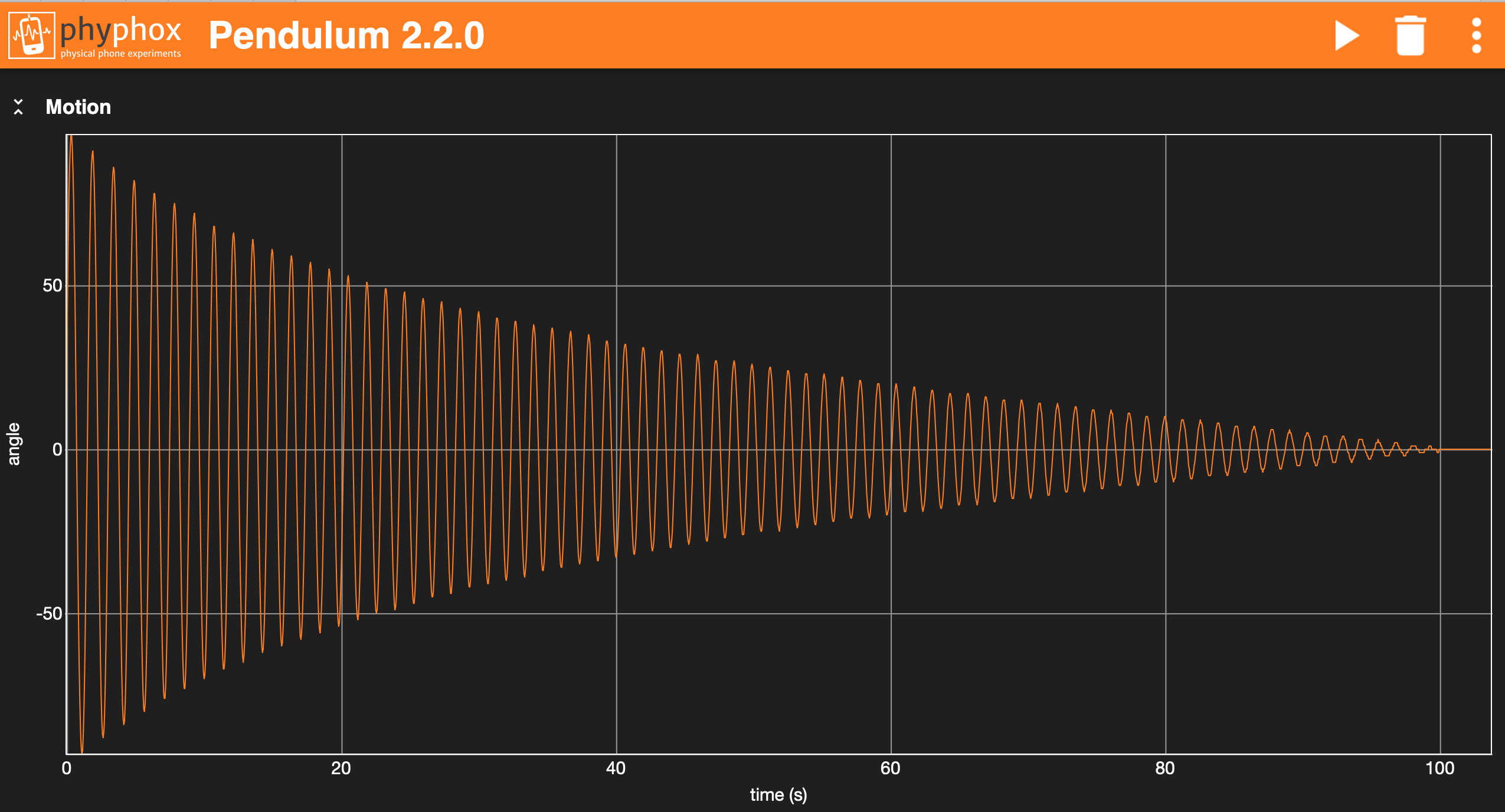
Acquisition of free oscillations (viscous friction of air only)
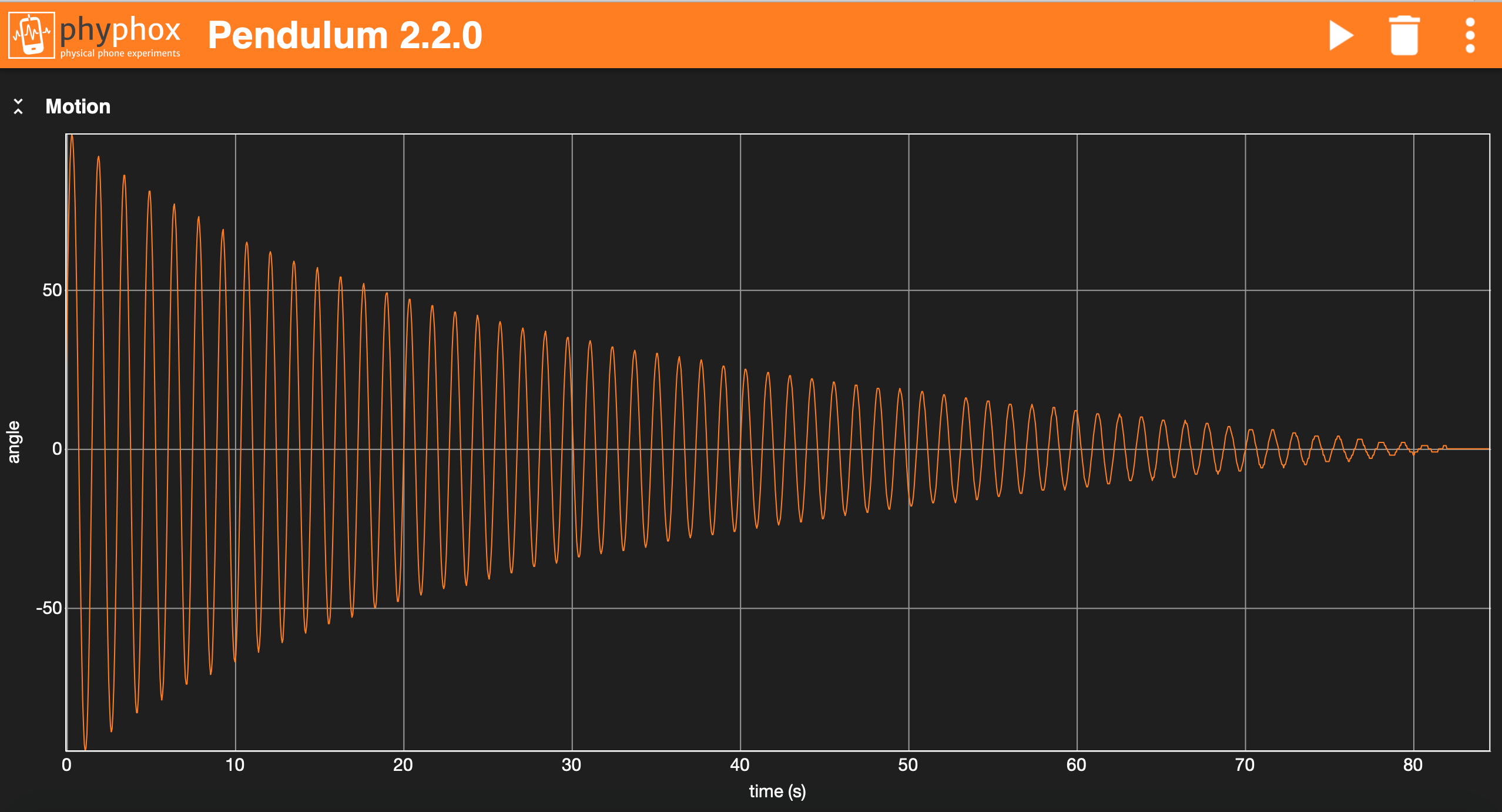
Acquisition of oscillations with magnet (higher viscous friction)

